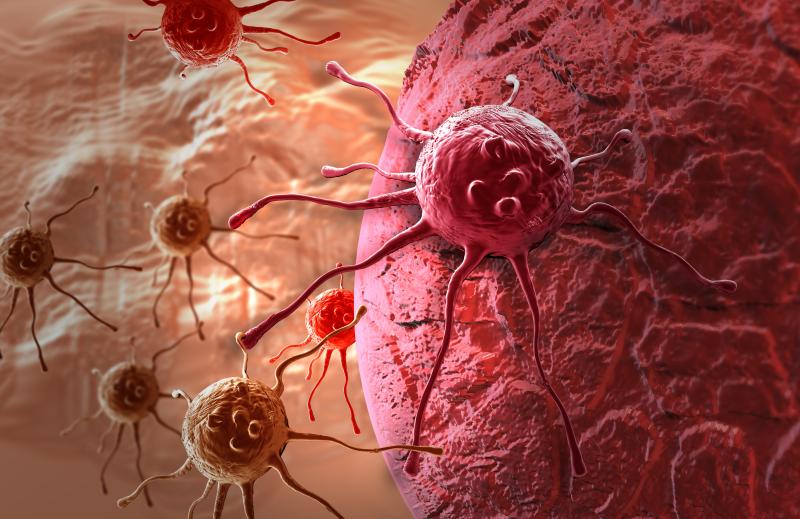
Circulating tumour DNA (ctDNA) holds strong prognostic value in colorectal cancer (CRC) patients, according to a new study presented at the 2019 Congress of the European Society of Medical Oncology (ESMO 2019). CtDNA may also help determine the optimum treatment intensity.
“In this large prospective trial, we confirmed that ctDNA is an independent prognostic factor in CRC,” said study lead author Prof Julien Taieb, of the Hôpital European Georges Pompidou in Paris, France. “Approximately six out of 10 patients who are ctDNA positive will remain disease-free two years after standard adjuvant chemotherapy, compared to eight out of 10 of those who are ctDNA negative.”
Blood samples from 805 CRC patients returned conclusive results for ctDNA analysis. Majority (86.46 percent; n=696; median age, 64.8 years) tested negative for ctDNA, while the remaining 13.54 percent (n=109; median age 63.8 years) were positive. Those with ctDNA in their blood were significantly more likely to have poorly or not differentiated tumour histology (13.6 percent vs 7.1 percent; p=0.0224). [ESMO 2019, abstract LBA30_PR]
Multivariate analysis found that the 2-year disease-free survival rate was significantly lower in those positive for the biomarker (64.12 percent vs 82.39 percent; hazard ratio [HR], 1.85, 95 percent CI, 1.31–2.61; p<0.001). Node stage also emerged as a significant risk factor (stage 2 vs 1: HR, 2.09, 1.59–2.73; p<0.0001).
Notably, patients who had undergone longer adjuvant chemotherapy enjoyed better survival rates (6 vs 3 months: HR, 0.6, 0.45–0.78; p=0.0002).
The relative advantage of a longer treatment duration remained true even after taking ctDNA test results into consideration. Those who were positive for ctDNA in the blood but received treatment for 6 months had better survival outcomes than their ctDNA-negative counterparts who underwent chemotherapy for only 3 months.
Stratifying according to other risk factors also did not attenuate the survival benefit of a longer treatment regimen. Six months of chemotherapy remained superior in patients with stage T4 or N2 disease, and in those with stage T1–3 or N1 cancer. The effect, however, was more pronounced in high-risk patients.
“CtDNA testing did not predict which patients should have 3 or 6 months of adjuvant chemotherapy,” Taieb said, noting that the optimal duration and type of treatment ctDNA-positive patients need to receive remain an open question.
However, because of the present findings, “we do now know that ctDNA is a major prognostic factor which will be very useful in stratifying patients and driving future trials of CRC,” he added. “In all subgroups, ctDNA positive patients who only had 3 months of adjuvant therapy had the worst prognosis.”
Confirmation of these results in other large-scale and robust studies will also help determine the best treatment option for CRC patients.